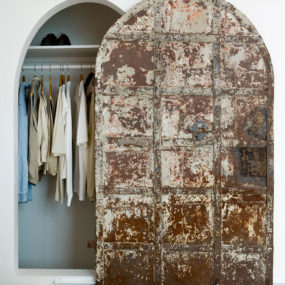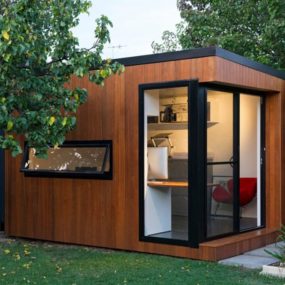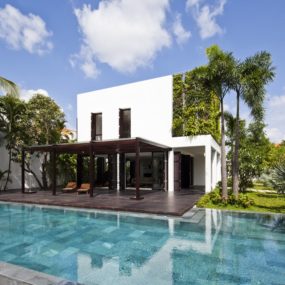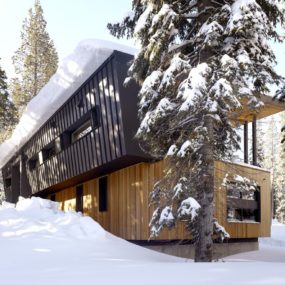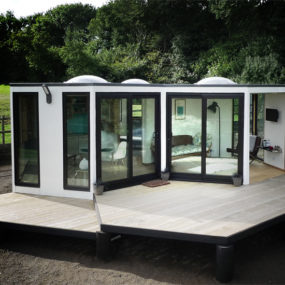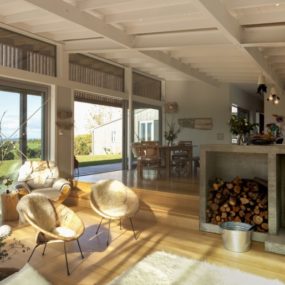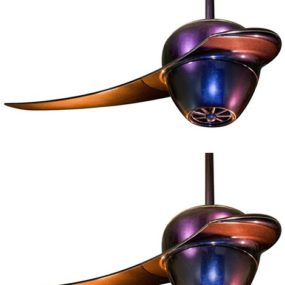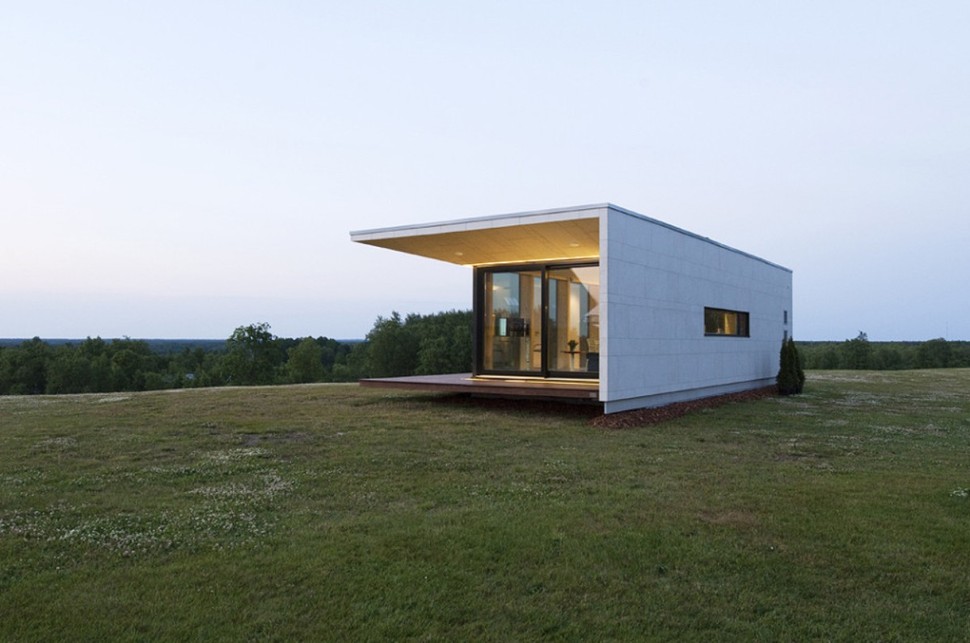
Compact modern prefab homes are popular projects for both major and localized architecture firms in today’s world, but oftentimes the balance between minimal size and maximized usability is skewed one way or the other, resulting either in a home that betrays its compact premises or one that lacks basic amenities. This design, a collaboration between Estonia’s “Architect 11” and Passion Group, tries to solve that nagging issue by utilizing convertible spaces to creating sleeping quarters, as opposed to cordoning off entire rooms for such a use. While there are still some drawbacks (notably, the privacy concerns invoked by the home’s all-encompassing glass area), Architect 11’s product is still a fully-functional home that successfully keeps close quarters. It could very easily be used as a compliment to a larger house, perhaps as an office space or guest cottage.
The Passion House M1, as this project is called, is the smallest home offered by the Passion Group, a premier manufacturer of prefabricated modern homes and one of the few to focus on luxury as a major premise, but it shares amenities with its larger siblings. Each home comes with all the furniture and finishes you see in the photographs here, and can be customized with a number of color schemes and floorplans. The tiny house is truly built to be as turnkey as possible, shipping with a premanufactured foundation and all the materials necessary to fully build and furnish the home in less than two days’ time. The M1 is a price-conscious, space-conscious, and design-conscious way to own a luxurious guest house, modern addition, or even your own small home.
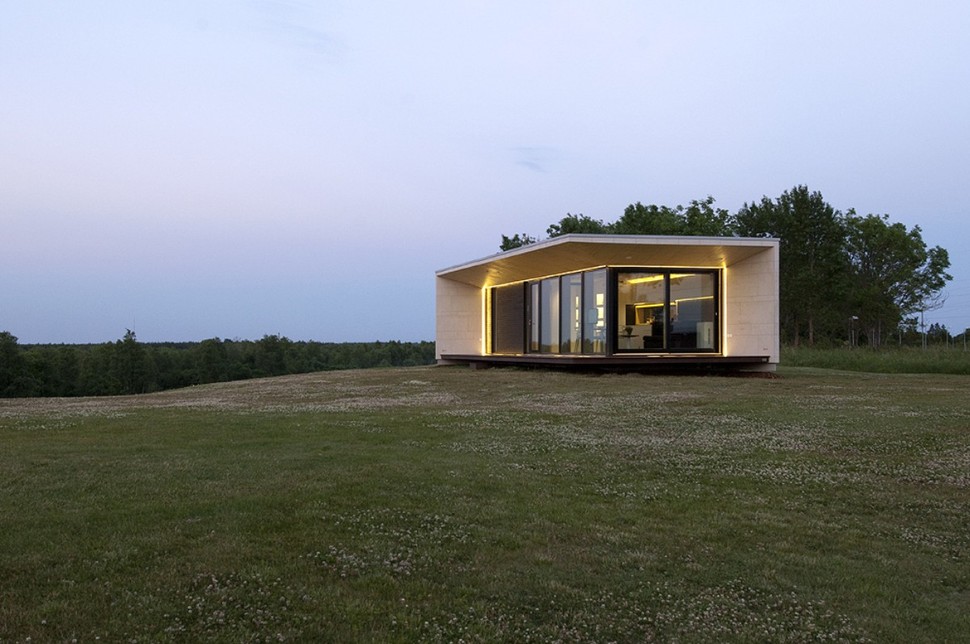
Two walls of the home are glass, giving homeowners sweeping views of whatever sort of property they happen to live on. To keep the home from having the boxy, indistinctly
rectangular look of some modern prefabs, the other two walls and the home’s roof jut out at an angle past the glass and hug the home. This architectural design choice also aids in privacy, restricting neighbors’ views from above and at either side.
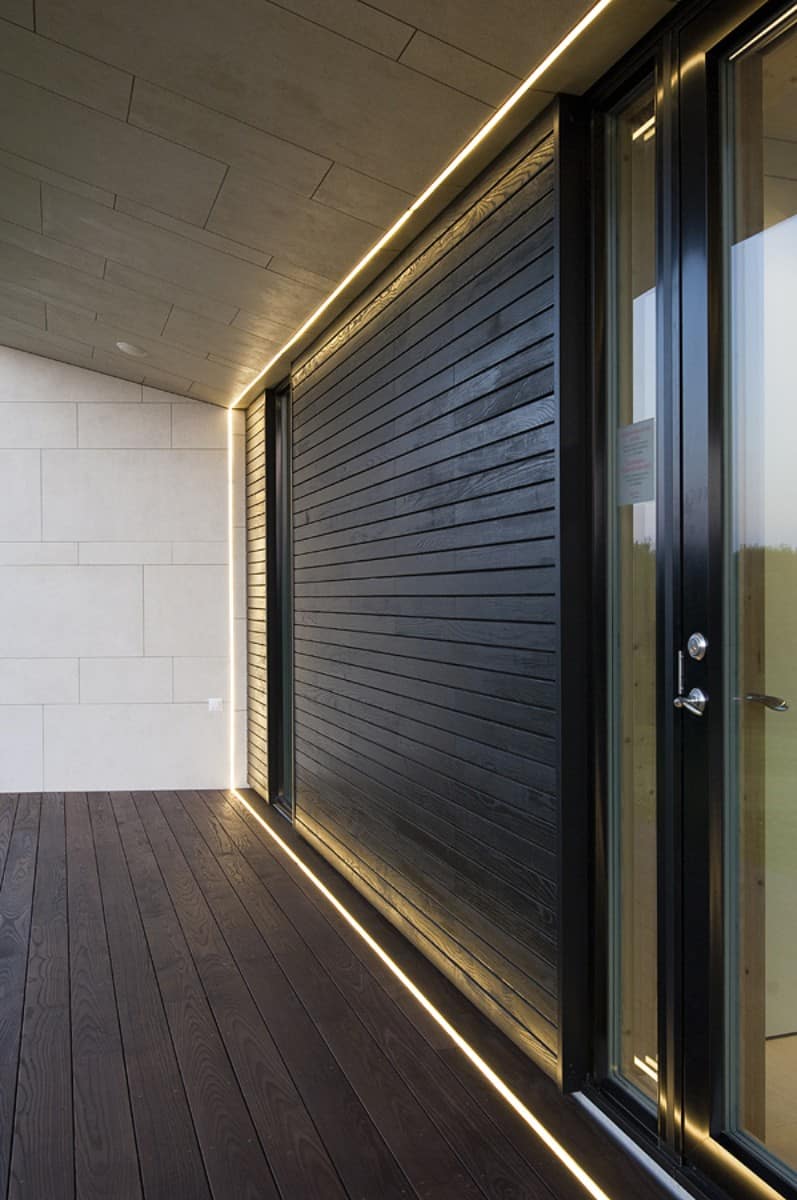
All of the materials in the home are chosen for their elegance and quality; this isn’t a prefab built to an extremely low price point. Dark wood strips pair with light, patterned tile for a stunning organic color contrast.
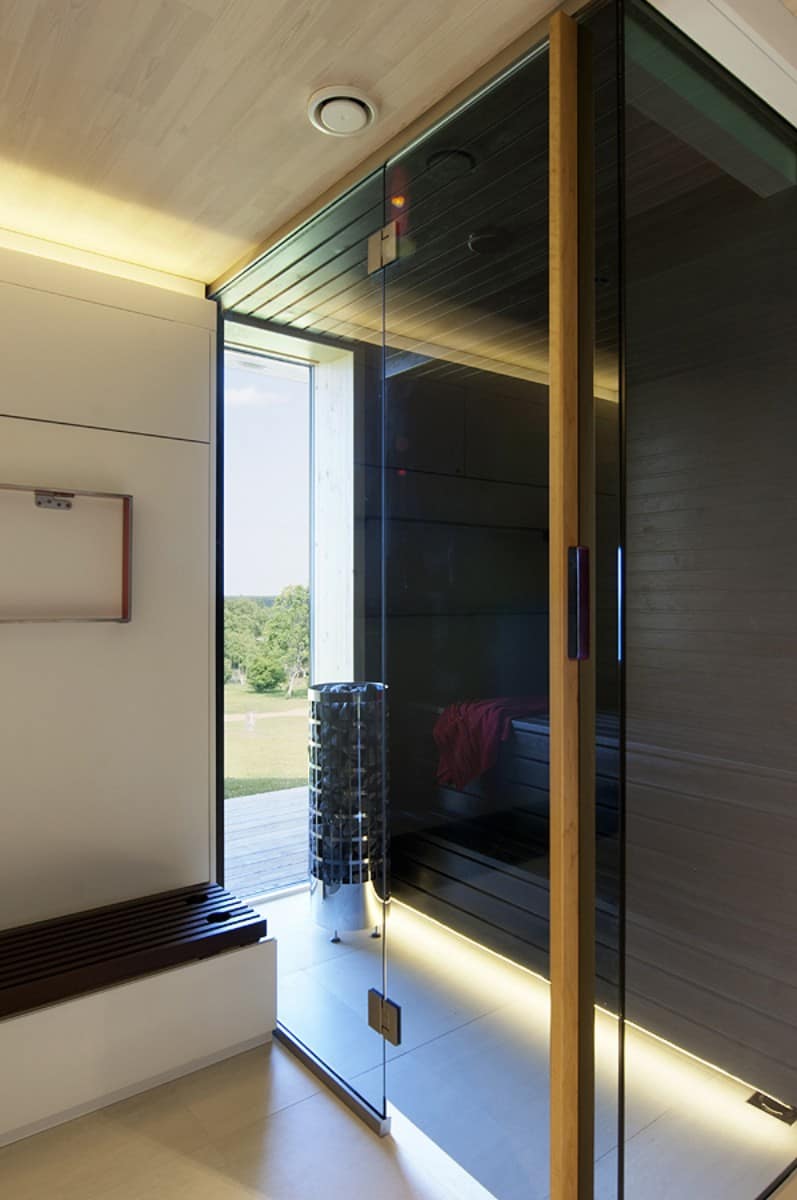
Though there may be very little floorspace in the home, that doesn’t keep its designers from adding a little bit of design flair here and there, such as in this little clear-glass glass nook that brings in light from the outdoors.

The kitchen and living room are a single small room, with square footage occupied by a couch and a few tables for eating and keeping books on.
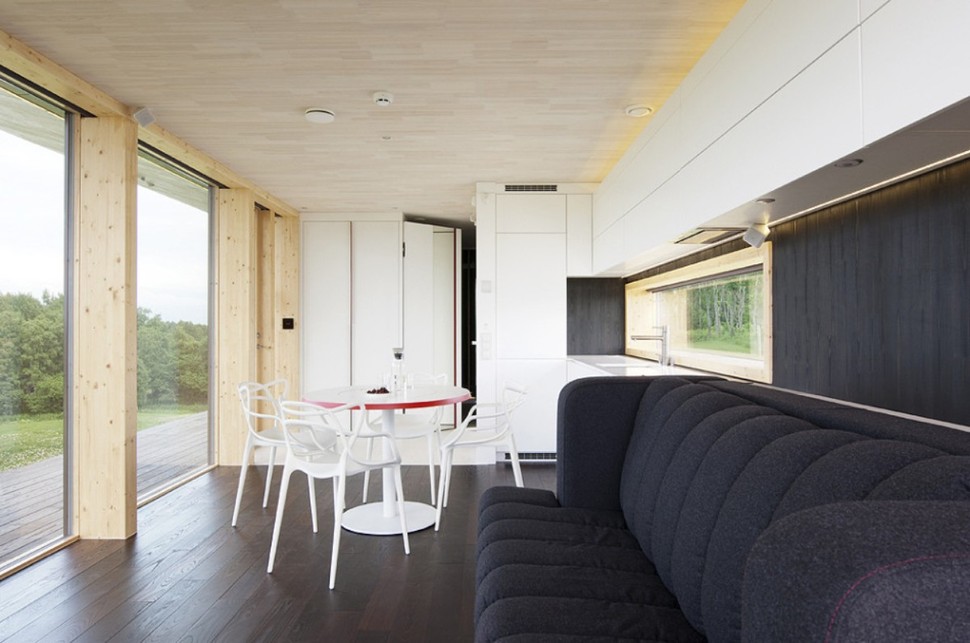
Different colors of wood throughout the living space, from the floor to walls to ceiling, create visual interest and help define the physical dimensions of the room. The light wood is kept in places that accent openness and give the home a more expanded feel, while darker woods are added for intimacy of environment and blend with the furniture and fittings.
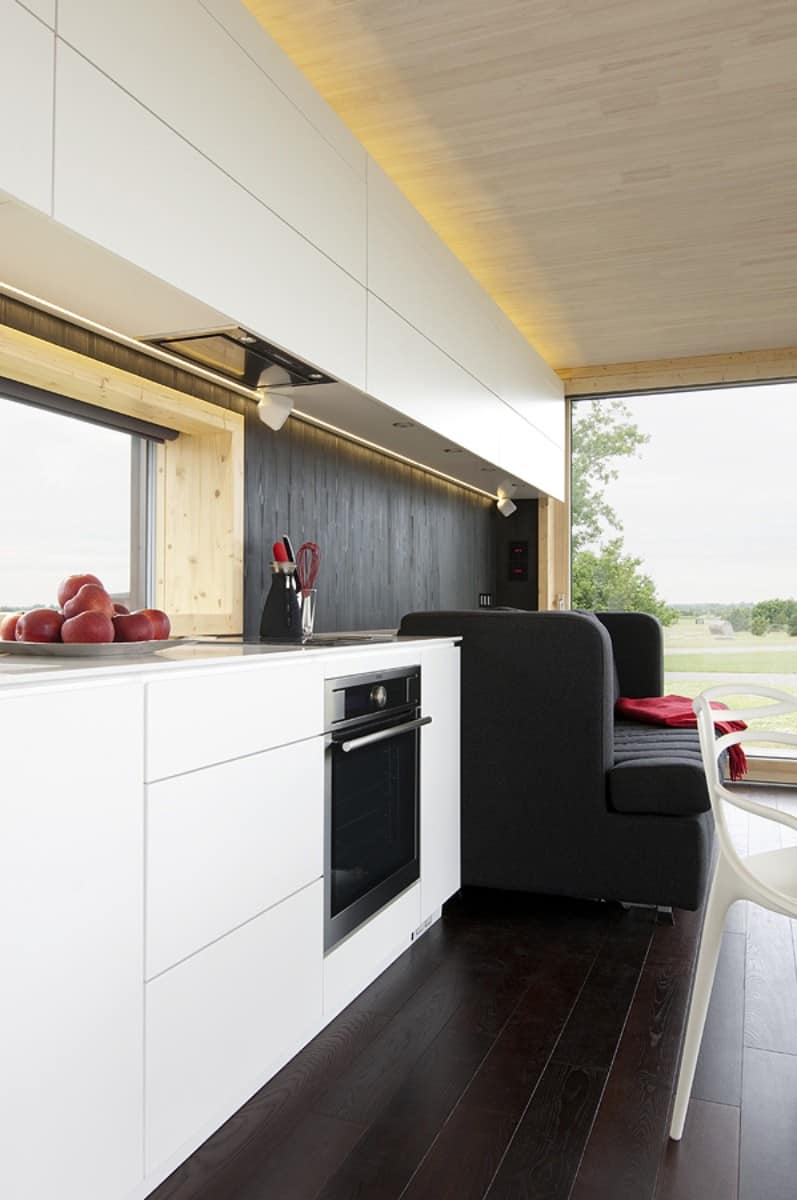
The kitchen’s appliances and space are set in a straight line along the same wall as the couch just inches from the “living room”, with shelving extended beyond the countertop to keep as many cooking items as could possibly be needed. The white of the area is a contrast to the black couch, and a window brings in light from the home’s back to further lighten it up.
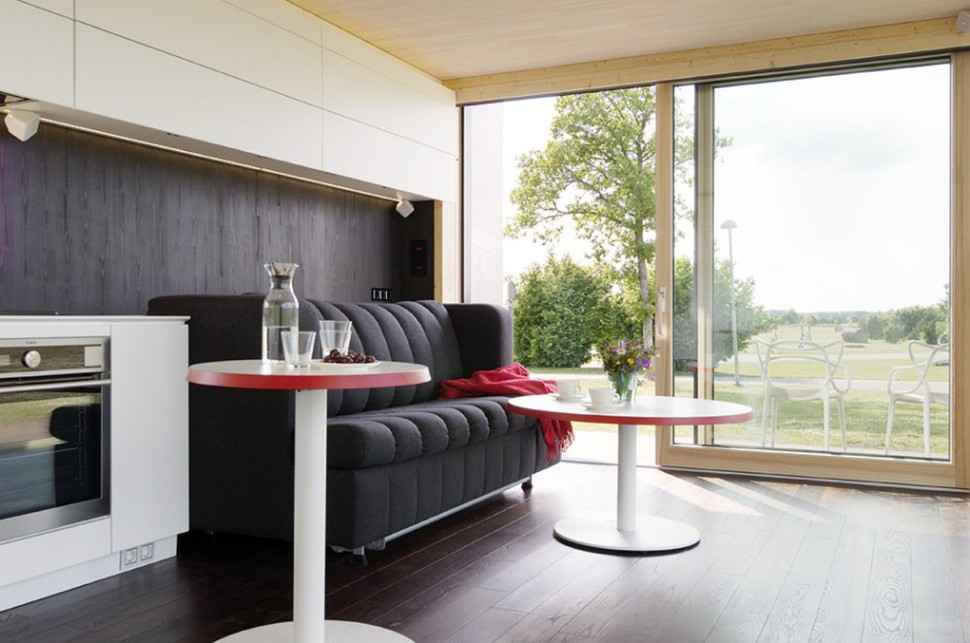
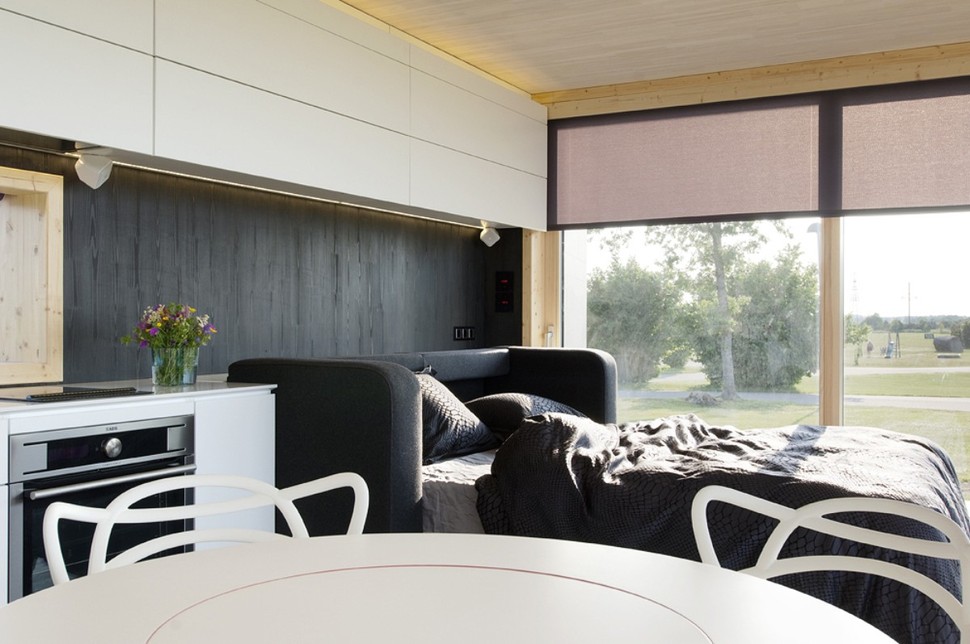
This living space is actually also the home’s first bedroom, the couch folding out into a bed sized for two. Even this doesn’t cramp the space, however, as the furniture is sized for the home it’s installed in. There’s plenty of walking room around the bed, and more space is to be found at the kitchen table next to it.
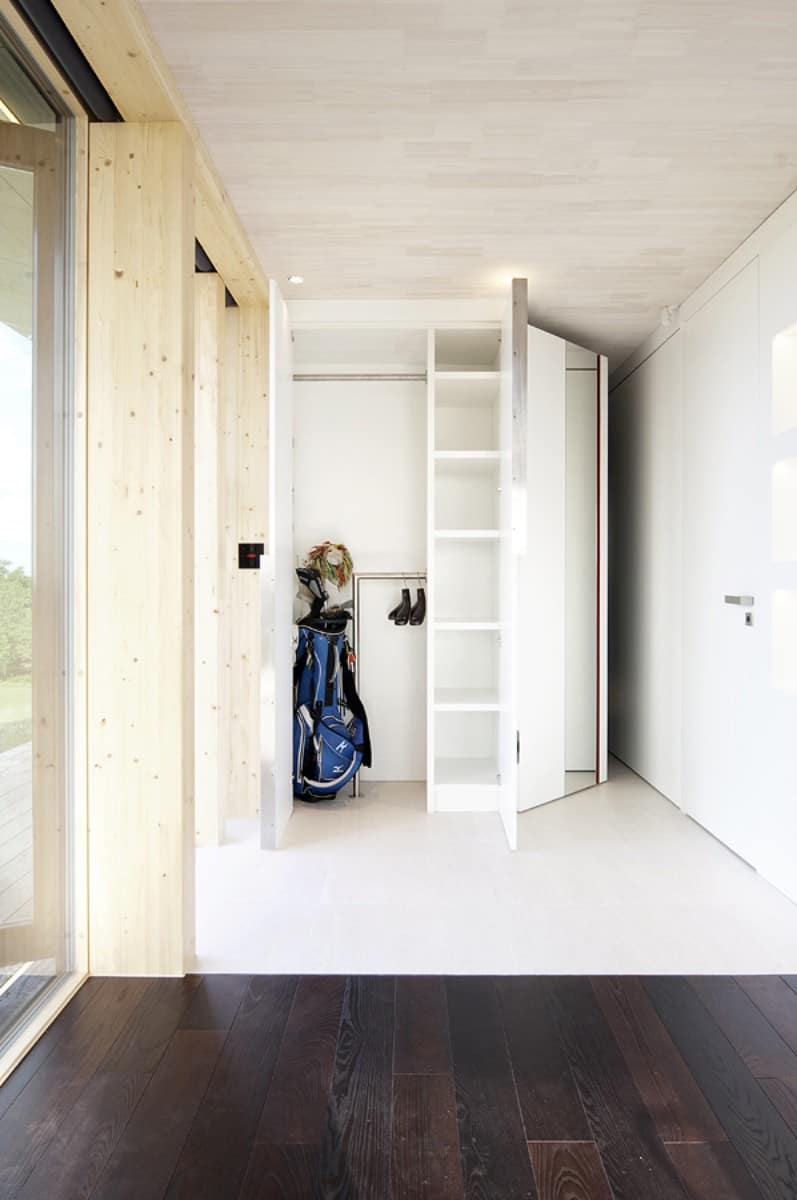
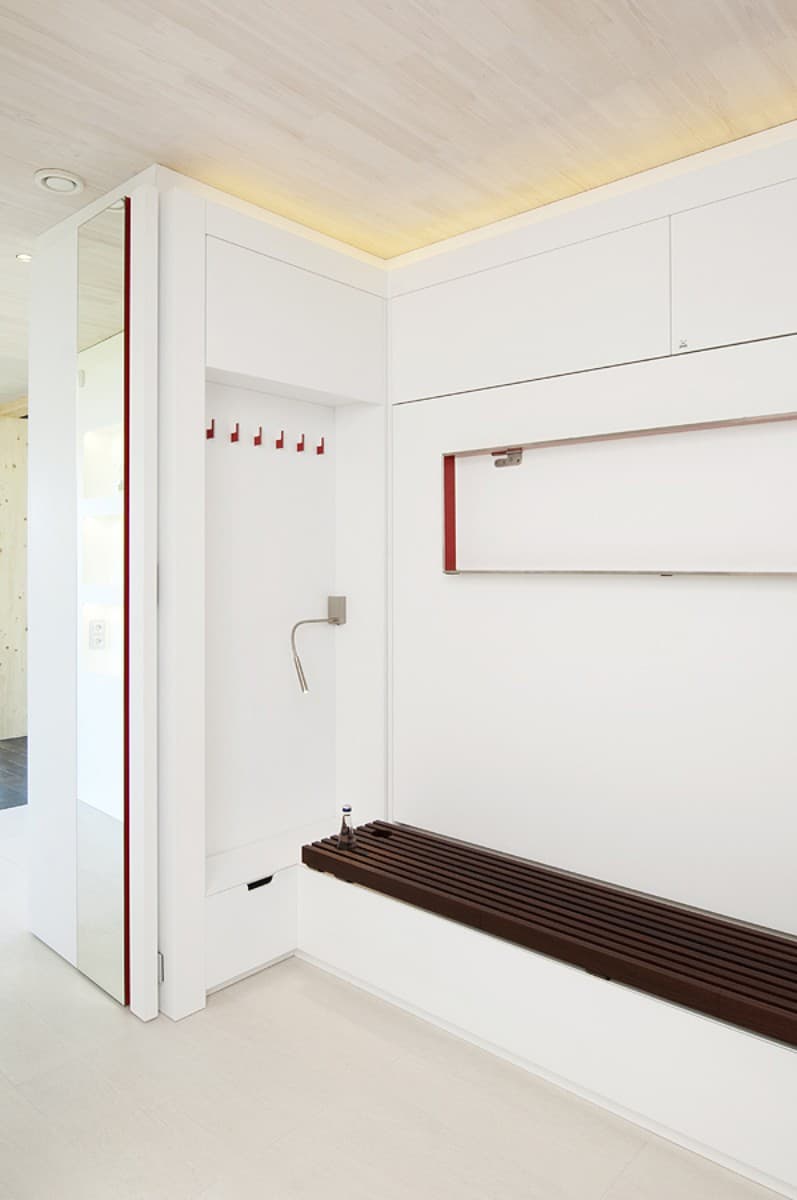
The second bedroom is found here, though you can’t yet see it. By day this alcove in the most private corner of the home (near the intersection of the two non-glass walls) is a bench and storage for coats and shoes, but it can be transformed by night into a single bed. If this structure were to be a guest house, you could theoretically house up to three visitors in the complete comfort of their own compact, upscale cottage.
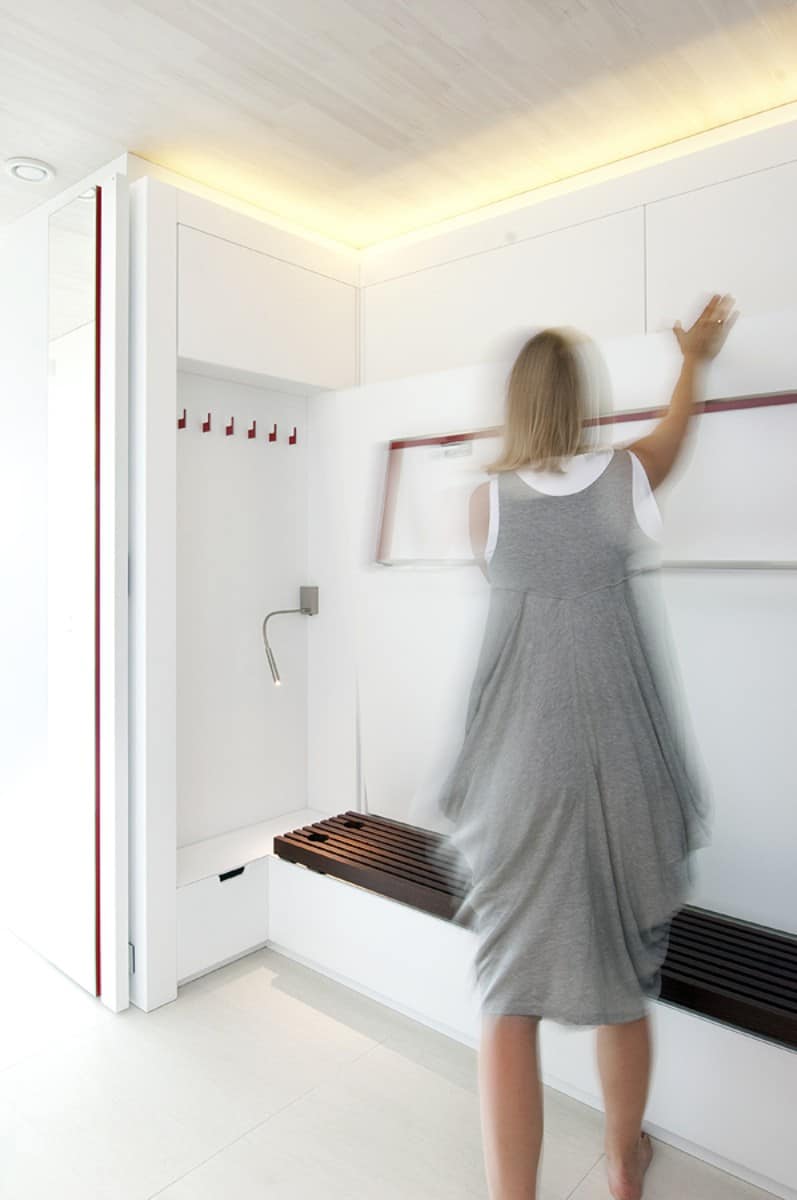
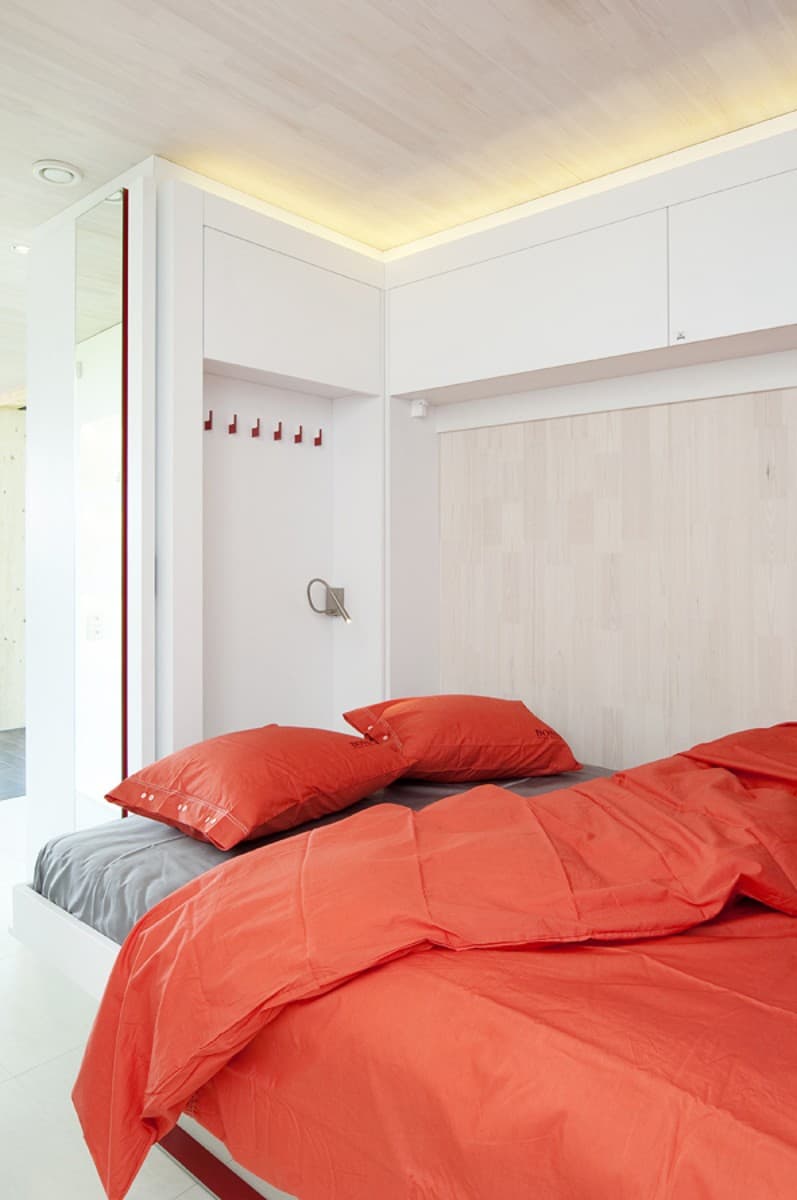
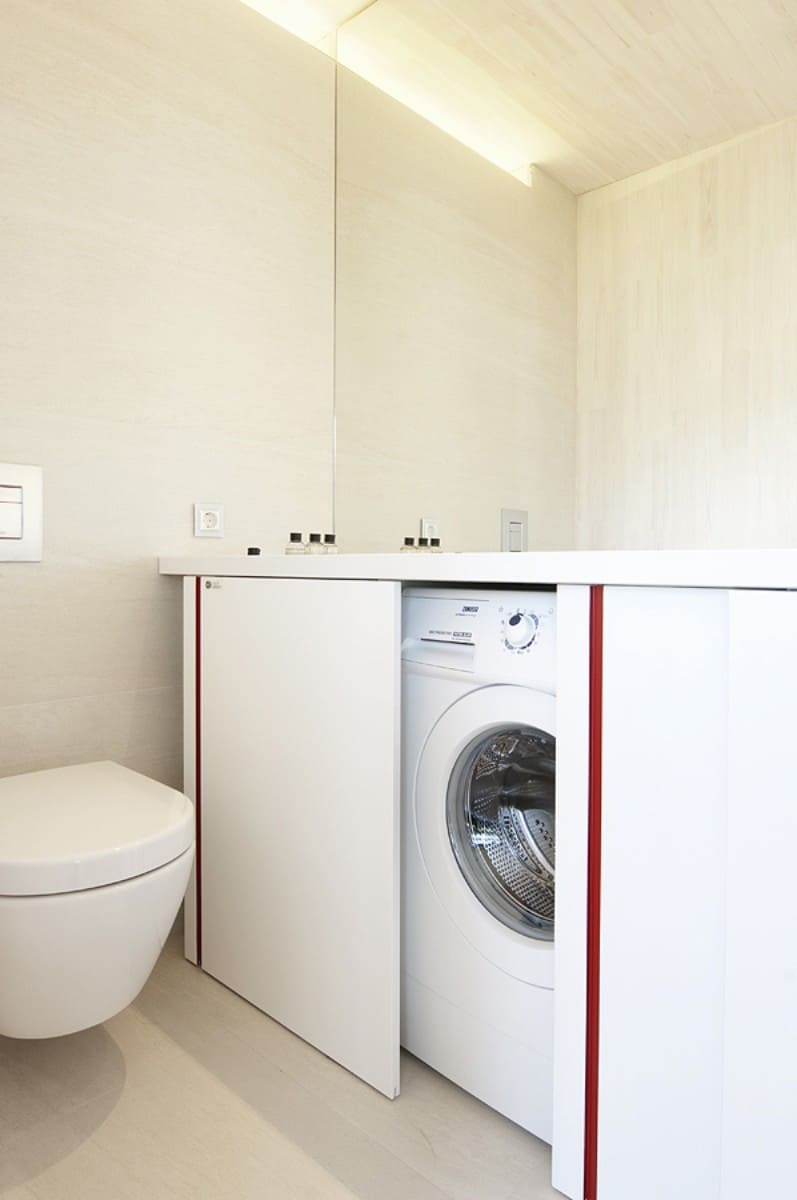
The smallest room of the home, its bathroom, also has a few transformable space tricks of its own. A small washer and dryer combo are kept under the sink, with room to spare for toiletries storage. As the most isolated room in the house, the room relies on soft accent lighting for any brightness.
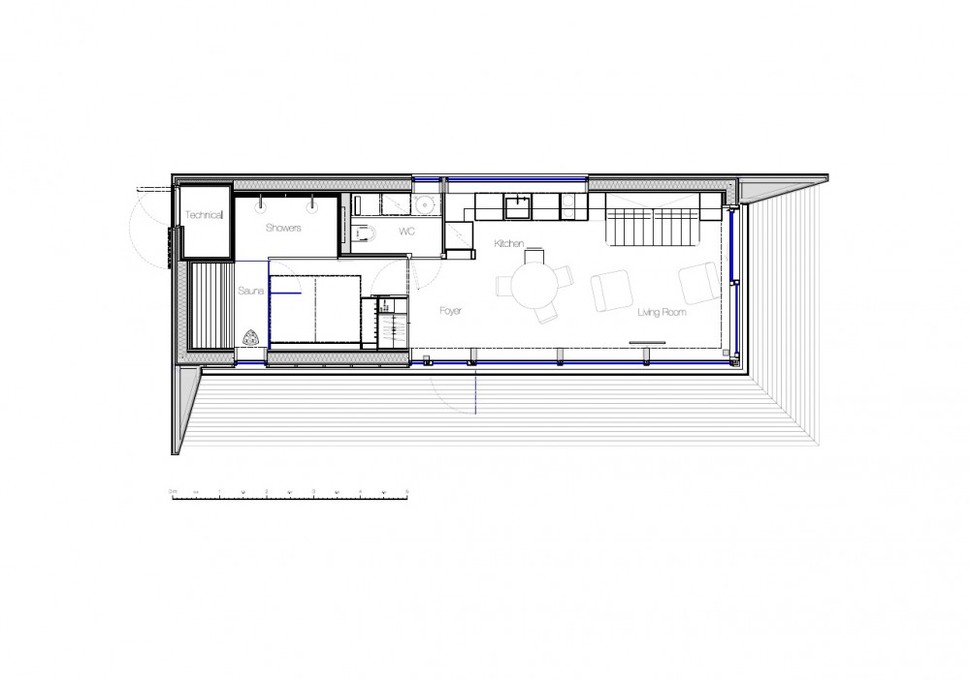
Architect 11 and Passion Group

